 M.T.H. evolved in the late 20th century as a modern distributor of well detailed locomotives
which they designed and were manufactured by Samhongsa in Korea. M.T.H. also produced Lionel
authorized Standard gauge tinplate reissues while at the same time posing a major challenge to Lionel for market share.
They produced a full range of 'O' gauge trains including starter sets and transformers, 'O-27', and 'O' scale locomotives,
rolling stock and accessories. These products are complemented by a fast-growing line of 1/32 Scale G gauge
offerings. Tinplate Standard gauge, S gauge and HO products were also manufactured.
M.T.H. evolved in the late 20th century as a modern distributor of well detailed locomotives
which they designed and were manufactured by Samhongsa in Korea. M.T.H. also produced Lionel
authorized Standard gauge tinplate reissues while at the same time posing a major challenge to Lionel for market share.
They produced a full range of 'O' gauge trains including starter sets and transformers, 'O-27', and 'O' scale locomotives,
rolling stock and accessories. These products are complemented by a fast-growing line of 1/32 Scale G gauge
offerings. Tinplate Standard gauge, S gauge and HO products were also manufactured.
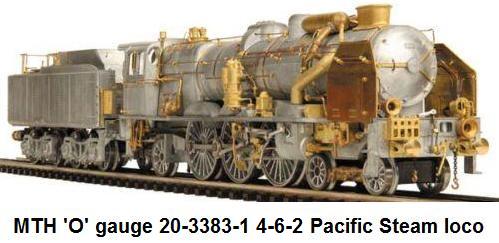 M.T.H. Electric Trains, also known as Mike's Train House, operated as an American toy train and model
railroad designer,
importer, and manufacturer, based in Columbia, Maryland as a privately held company. M.T.H.'s founder,
Mike Wolf, started assembling and selling model trains at the age of 12 in 1973 for
Williams Electric Trains, which had begun producing reproductions of trains
manufactured by Lionel Corporation in the early 1970's. Wolf first saw his life's work stretch out in front
of him in 1977, the day Williams enlisted his help at the TCA Eastern Division's York, Pa., train show, the biggest on the
railroading calendar. Hobbyists flock there to talk, to see the latest models, to fill the trunks
of their cars with engines and box cars and accessories. Jerome Williams would position Mike Wolf behind the parts
table, where the line often snaked practically out of sight. Wolf, who got to keep 10% of the take,
remembers selling $150,000 worth of parts at a single weekend show.
M.T.H. Electric Trains, also known as Mike's Train House, operated as an American toy train and model
railroad designer,
importer, and manufacturer, based in Columbia, Maryland as a privately held company. M.T.H.'s founder,
Mike Wolf, started assembling and selling model trains at the age of 12 in 1973 for
Williams Electric Trains, which had begun producing reproductions of trains
manufactured by Lionel Corporation in the early 1970's. Wolf first saw his life's work stretch out in front
of him in 1977, the day Williams enlisted his help at the TCA Eastern Division's York, Pa., train show, the biggest on the
railroading calendar. Hobbyists flock there to talk, to see the latest models, to fill the trunks
of their cars with engines and box cars and accessories. Jerome Williams would position Mike Wolf behind the parts
table, where the line often snaked practically out of sight. Wolf, who got to keep 10% of the take,
remembers selling $150,000 worth of parts at a single weekend show.
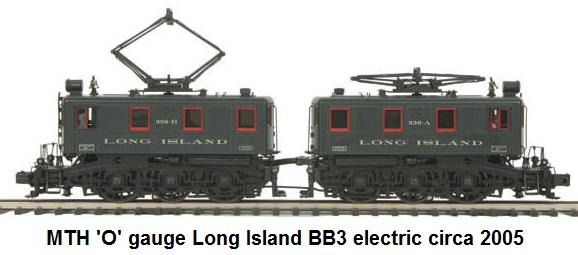 By 1980, Wolf was operating a mail order business out of his parents' home, selling Williams trains and parts out of his
bedroom. When Williams decided to stop producing its line of Lionel Standard gauge and 'O' gauge reproductions and parts,
Mike Wolf bought the tooling and continued building the replicas. At train shows, customers approaching 20-year-old Wolf's
table didn't realize he was the business owner, and often asked to speak with his father. Although many published reports
have stated that Williams had acquired original Lionel tooling, both Mike Wolf and Jerry Williams deny this claim.
By 1980, Wolf was operating a mail order business out of his parents' home, selling Williams trains and parts out of his
bedroom. When Williams decided to stop producing its line of Lionel Standard gauge and 'O' gauge reproductions and parts,
Mike Wolf bought the tooling and continued building the replicas. At train shows, customers approaching 20-year-old Wolf's
table didn't realize he was the business owner, and often asked to speak with his father. Although many published reports
have stated that Williams had acquired original Lionel tooling, both Mike Wolf and Jerry Williams deny this claim.
 At age 22, a year younger than Joshua Lionel Cowen had been when he founded Lionel, Mike Wolf was
becoming a player in the industry. He was considered by many as being something of a second coming of Cowen. A 5' 5" titan
of American entrepreneurship, Cowen founded Lionel Manufacturing in 1900 at age 23. Wolf, too,
topped out at 5' 5" tall. And he would prove just as competitive, self-promoting, and audacious as the
man he considered his role model.
At age 22, a year younger than Joshua Lionel Cowen had been when he founded Lionel, Mike Wolf was
becoming a player in the industry. He was considered by many as being something of a second coming of Cowen. A 5' 5" titan
of American entrepreneurship, Cowen founded Lionel Manufacturing in 1900 at age 23. Wolf, too,
topped out at 5' 5" tall. And he would prove just as competitive, self-promoting, and audacious as the
man he considered his role model.

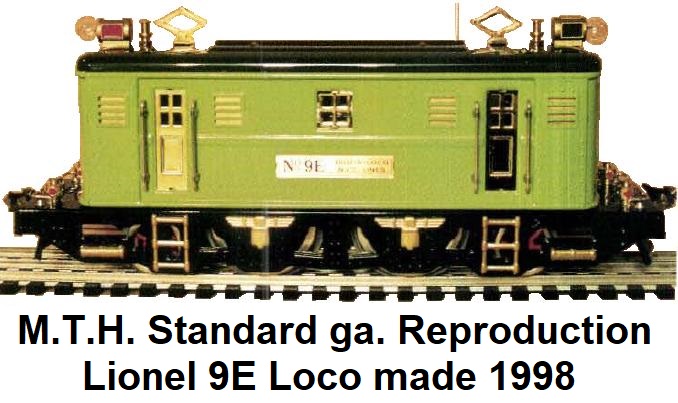 From 1983 to 1987, M.T.H. marketed the reproduction trains on its own. Business was good, and a headquarters was
established in a business complex in Columbia. In 1987, Lionel approached Samhongsa,
M.T.H.'s subcontractor in South Korea, about manufacturing Standard gauge trains that bore the Lionel name.
Samhongsa directed Lionel to Wolf. Before the end of 1987, M.T.H. became a Lionel subcontractor, allowing M.T.H.'s
Lionel reproductions to bear the Lionel name and be marketed by Lionel itself. M.T.H. made 100% of what was
called at the time Lionel Classics. M.T.H. stopped making trains under its own name while a subcontractor to Lionel.
As part of the agreement, M.T.H. sold Lionel trains as part of its mail-order business. Wolf traveled frequently to Lionel
headquarters in Chesterfield, Mich., and began taking part in product and marketing discussions. He says he felt "almost like
an employee". By the early 1990's, M.T.H. was the second-largest mail-order Lionel dealer in the country.
M.T.H. and Samhongsa designed and produced several different die-cast 'O' scale trains for Lionel Trains Inc. between 1987
and 1993. These included brass cast models of the Reading T1, Pennsy Steam Turbine, NYC Mohawk, Chessie Steam Special,
Southern Mikado #4501, D&RG PA-1AA, Shay, GG-1, MU Cars and dummy.
From 1983 to 1987, M.T.H. marketed the reproduction trains on its own. Business was good, and a headquarters was
established in a business complex in Columbia. In 1987, Lionel approached Samhongsa,
M.T.H.'s subcontractor in South Korea, about manufacturing Standard gauge trains that bore the Lionel name.
Samhongsa directed Lionel to Wolf. Before the end of 1987, M.T.H. became a Lionel subcontractor, allowing M.T.H.'s
Lionel reproductions to bear the Lionel name and be marketed by Lionel itself. M.T.H. made 100% of what was
called at the time Lionel Classics. M.T.H. stopped making trains under its own name while a subcontractor to Lionel.
As part of the agreement, M.T.H. sold Lionel trains as part of its mail-order business. Wolf traveled frequently to Lionel
headquarters in Chesterfield, Mich., and began taking part in product and marketing discussions. He says he felt "almost like
an employee". By the early 1990's, M.T.H. was the second-largest mail-order Lionel dealer in the country.
M.T.H. and Samhongsa designed and produced several different die-cast 'O' scale trains for Lionel Trains Inc. between 1987
and 1993. These included brass cast models of the Reading T1, Pennsy Steam Turbine, NYC Mohawk, Chessie Steam Special,
Southern Mikado #4501, D&RG PA-1AA, Shay, GG-1, MU Cars and dummy.
 M.T.H. developed a troubled relationship with Lionel, and it ended in April 1993, when M.T.H. decided to re-enter
the market with an 'O' scale model of the General Electric Dash 8 diesel locomotive, which Mike Wolf had first
offered to produce for Lionel. Turned down, Wolf decided to market the locomotive himself, citing reduced
orders from Lionel for M.T.H.'s replicas as the reason. Then-Lionel CEO Richard Kughn, who learned of the
decision from a flyer at a train show, responded by cancelling M.T.H.'s Lionel dealership.
At around the same time, Mike Wolf had become a hidden 50% partner in a start-up called
Weaver Brass that built and sold brass 'O' scale steam engines. Wolf was
competing against Lionel at the same time that he worked for them. After Kughn gave M.T.H. the boot, M.T.H. in turn filed
an anti-trust suit against Lionel, which was settled out of court in 1995. M.T.H. then expanded its product
line, adding the former Lionel vintage reproductions, reproductions of equipment from other manufacturers,
such as American Flyer, Dorfan, and
Ives, along with new original designs. In 1994, Samhongsa began making 'O' gauge die-cast trains for
resale under M.T.H.'s name, a relationship that continued until 2002. By 1998, M.T.H. was the largest manufacturer of 'O'
gauge trains, eclipsing Lionel's market share by approximately $60 million to $50 million. At its peak, M.T.H. employed about
135 people. Mike Wolf's approach was to provide customers with a better quality product when compared to the competition's
offerings, but at a lower price.
M.T.H. developed a troubled relationship with Lionel, and it ended in April 1993, when M.T.H. decided to re-enter
the market with an 'O' scale model of the General Electric Dash 8 diesel locomotive, which Mike Wolf had first
offered to produce for Lionel. Turned down, Wolf decided to market the locomotive himself, citing reduced
orders from Lionel for M.T.H.'s replicas as the reason. Then-Lionel CEO Richard Kughn, who learned of the
decision from a flyer at a train show, responded by cancelling M.T.H.'s Lionel dealership.
At around the same time, Mike Wolf had become a hidden 50% partner in a start-up called
Weaver Brass that built and sold brass 'O' scale steam engines. Wolf was
competing against Lionel at the same time that he worked for them. After Kughn gave M.T.H. the boot, M.T.H. in turn filed
an anti-trust suit against Lionel, which was settled out of court in 1995. M.T.H. then expanded its product
line, adding the former Lionel vintage reproductions, reproductions of equipment from other manufacturers,
such as American Flyer, Dorfan, and
Ives, along with new original designs. In 1994, Samhongsa began making 'O' gauge die-cast trains for
resale under M.T.H.'s name, a relationship that continued until 2002. By 1998, M.T.H. was the largest manufacturer of 'O'
gauge trains, eclipsing Lionel's market share by approximately $60 million to $50 million. At its peak, M.T.H. employed about
135 people. Mike Wolf's approach was to provide customers with a better quality product when compared to the competition's
offerings, but at a lower price.
 When Mike Wolf and Lionel parted ways after the Lionel Classics era, there was left over stock and parts.
Most was sold at a discount price through retailers, but some were repainted by Frank Rash of Frank's
Roundhouse. Items included the #1115 station, #440 Signal Bridge and control panel, the 'O' gauge #350 Hiawatha passenger
set, the 'O' gauge #44 freight set, and a custom decorated 1989 Season's Greeting box car in Standard gauge. Also issued from
these parts were a #390E loco, a #200 trolley with #201 trailer, a #126 station, a #384 loco, a #385 loco, and #392 loco. One
item built from those parts that is highly coveted by collectors is a set of Lionel-Ives transition type Standard gauge #300
series passenger cars. These were offered in red and black, red and silver, terra cotta and maroon, two-tone blue, green,
blue, and even pink paint schemes with either brass or nickel trim.
When Mike Wolf and Lionel parted ways after the Lionel Classics era, there was left over stock and parts.
Most was sold at a discount price through retailers, but some were repainted by Frank Rash of Frank's
Roundhouse. Items included the #1115 station, #440 Signal Bridge and control panel, the 'O' gauge #350 Hiawatha passenger
set, the 'O' gauge #44 freight set, and a custom decorated 1989 Season's Greeting box car in Standard gauge. Also issued from
these parts were a #390E loco, a #200 trolley with #201 trailer, a #126 station, a #384 loco, a #385 loco, and #392 loco. One
item built from those parts that is highly coveted by collectors is a set of Lionel-Ives transition type Standard gauge #300
series passenger cars. These were offered in red and black, red and silver, terra cotta and maroon, two-tone blue, green,
blue, and even pink paint schemes with either brass or nickel trim.
 M.T.H. produced a popular set of New York City Subway cars as well as a set of Chicago El cars. The NYC
#R-26 4-car subway sets were licensed by the MTA. Lionel had held this license in 'O' scale while
Walthers held the license in HO scale after acquiring Life-Like.
The license transfer was in part due to M.T.H. producing their sets covered in graffiti.
M.T.H. produced a popular set of New York City Subway cars as well as a set of Chicago El cars. The NYC
#R-26 4-car subway sets were licensed by the MTA. Lionel had held this license in 'O' scale while
Walthers held the license in HO scale after acquiring Life-Like.
The license transfer was in part due to M.T.H. producing their sets covered in graffiti.
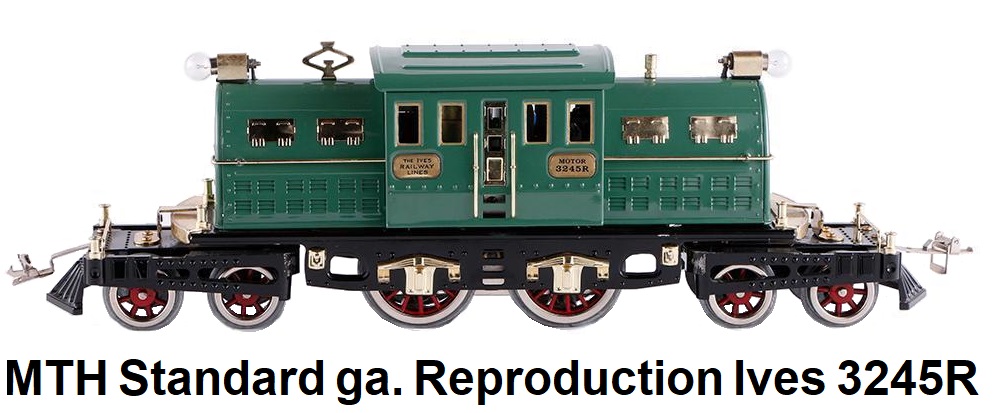 M.T.H. and Lionel developed a rivalry similar to that between Lionel and Ives in the
1930's and Lionel and American Flyer in the 1940's and 1950's. Although their train cars
are the same size and can operate as part of the same train, the two companies' locomotives used their
own proprietary electronic control systems. M.T.H. employed a system called Digital Command System (DCS),
which is capable of operating M.T.H. engines as well as engines using Lionel's Trainmaster Command Control
(TMCC), used by many other 'O' gauge manufacturers, and Digital Command Control (DCC), which is an open
industry standard used by most 2-rail scales.
M.T.H. and Lionel developed a rivalry similar to that between Lionel and Ives in the
1930's and Lionel and American Flyer in the 1940's and 1950's. Although their train cars
are the same size and can operate as part of the same train, the two companies' locomotives used their
own proprietary electronic control systems. M.T.H. employed a system called Digital Command System (DCS),
which is capable of operating M.T.H. engines as well as engines using Lionel's Trainmaster Command Control
(TMCC), used by many other 'O' gauge manufacturers, and Digital Command Control (DCC), which is an open
industry standard used by most 2-rail scales.
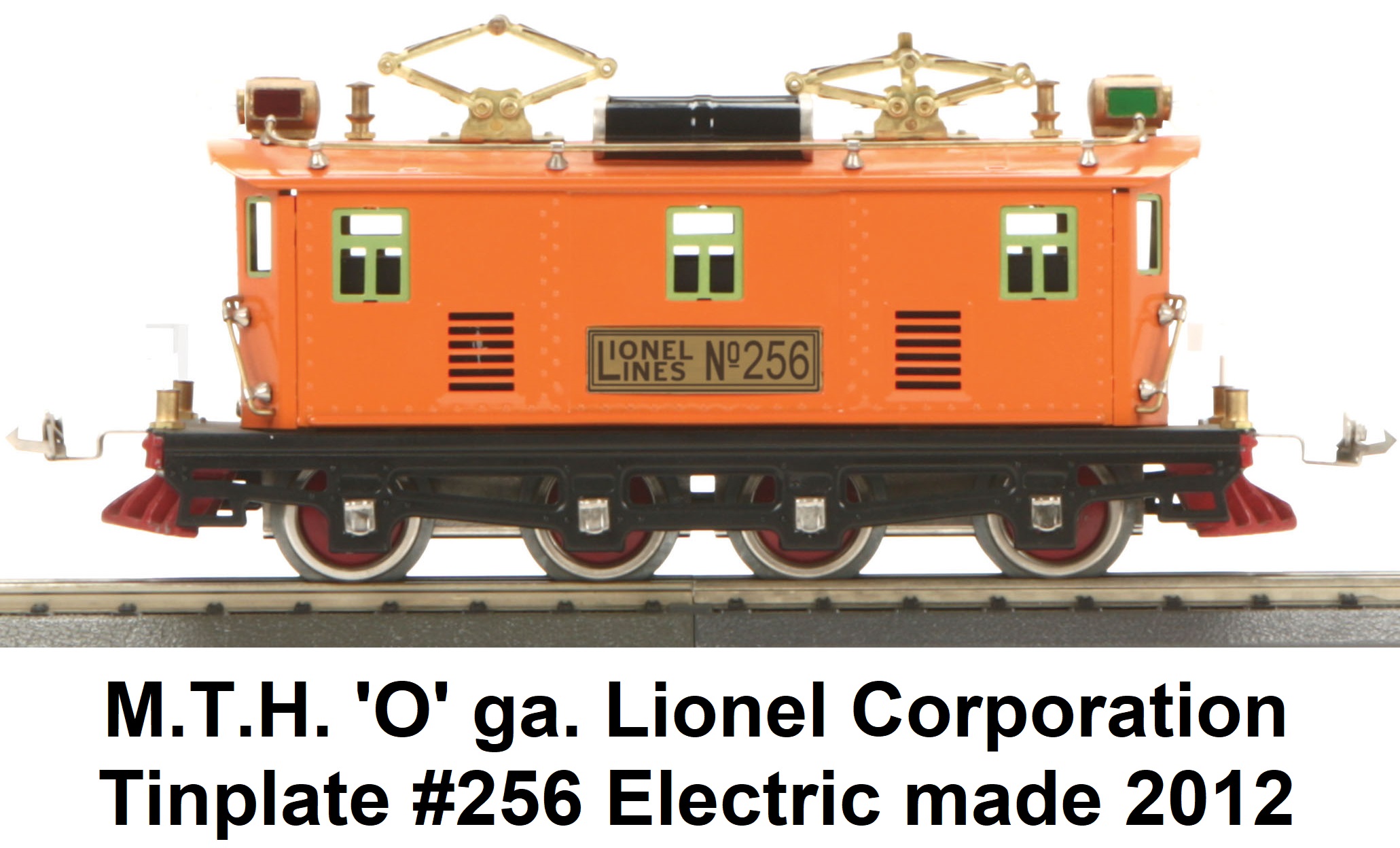
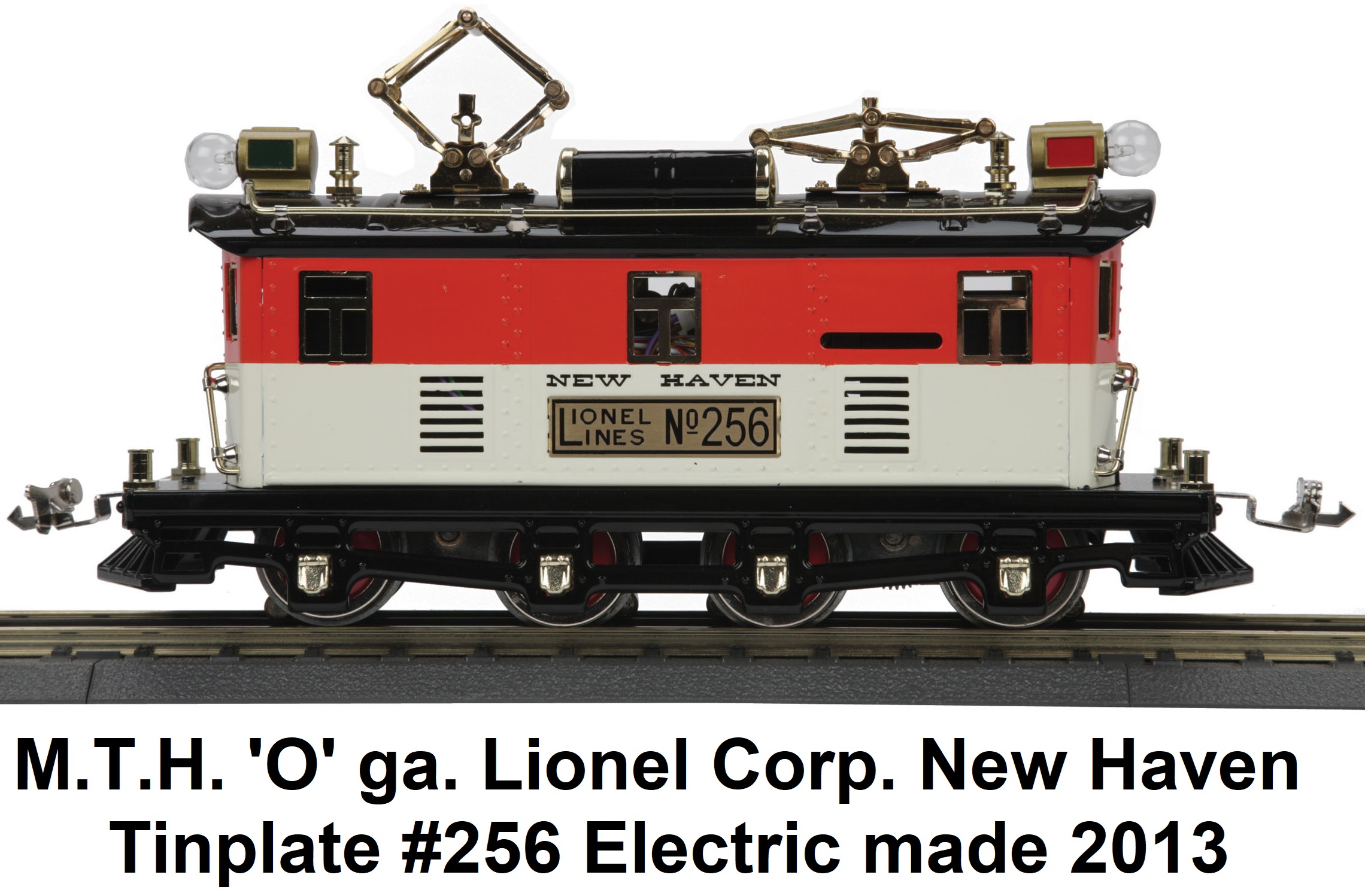
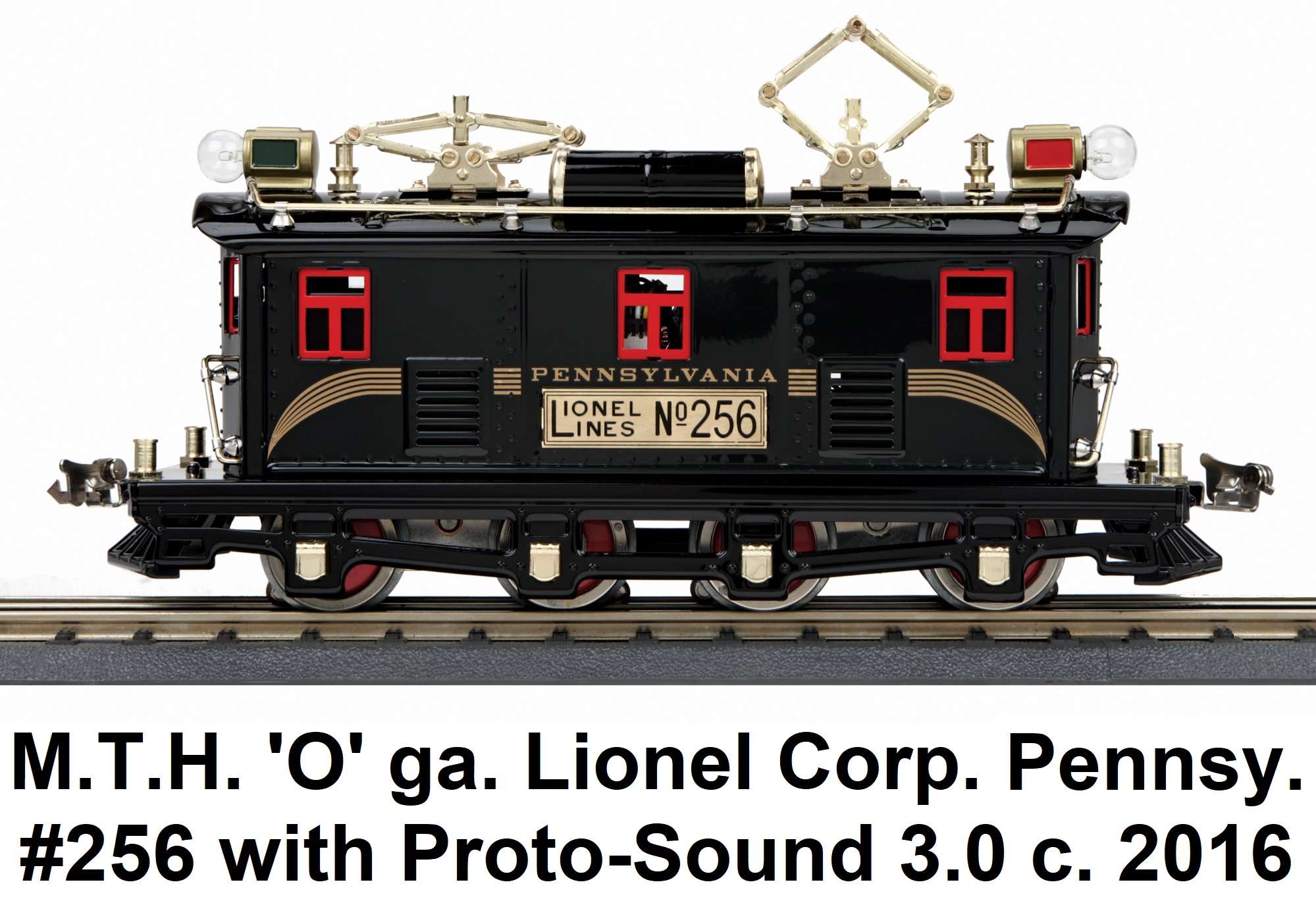
The M.T.H. line consisted of both reproductions of the Standard and 'O' gauge tinplate equipment made by
the earlier manufacturers in the traditional styles and color schemes, but also new and different paint schemes and heralds
with additional features including Proto-Sound 2.0 and the Digital Command System. The Premier Line offerings of 'O' scale
were targeted at serious finescale modelers.
 In December 1999, 3 former employees of Samhongsa rival Korea Brass were convicted of industrial espionage
in South Korea for stealing and using proprietary M.T.H. designs to produce 2 models for Lionel. In April 2000, M.T.H. again
sued Lionel, this time in a US Federal District Court for industrial espionage, citing as evidence original electronic drawing
files and the precedent set in the South Korean criminal courts. On June 7, 2004, a jury in Detroit, Michigan found
Lionel and its subcontractor Korea Brass guilty and awarded M.T.H. $40.8 million in damages. The following day, Lionel
announced it would appeal the verdict. On December 14, 2006, the judgment was overturned on appeal, citing legal mistakes in
the jury trial, and a new trial ordered. A settlement between the 2 companies was reached and approved by the court in
2008.
In December 1999, 3 former employees of Samhongsa rival Korea Brass were convicted of industrial espionage
in South Korea for stealing and using proprietary M.T.H. designs to produce 2 models for Lionel. In April 2000, M.T.H. again
sued Lionel, this time in a US Federal District Court for industrial espionage, citing as evidence original electronic drawing
files and the precedent set in the South Korean criminal courts. On June 7, 2004, a jury in Detroit, Michigan found
Lionel and its subcontractor Korea Brass guilty and awarded M.T.H. $40.8 million in damages. The following day, Lionel
announced it would appeal the verdict. On December 14, 2006, the judgment was overturned on appeal, citing legal mistakes in
the jury trial, and a new trial ordered. A settlement between the 2 companies was reached and approved by the court in
2008.
 M.T.H. also traded lawsuits with Quantum Sound Industries (QSI), whose technology is used to add electronic
sound to model locomotives from various manufacturers. M.T.H.'s critics have pointed out that the company patented some
elements of DCC, which was supposed to be an unencumbered open standard. M.T.H. made $9.6 million in profit
in 1997. The number dropped to $7.8 million in 1998, $6.2 million in 1999, and less than $1 million in 2000 on sales of
$60 million. Between 2000 and 2003, according to Wolf, sales fell by $20 million, triggering the layoff of about 50 M.T.H.
employees. M.T.H. lost some $815,000 in 2001. By June of 2004, M.T.H. had 57 employees
and annual sales of about US$40 million. News reports from the fall of 2004 estimated M.T.H.'s annual sales at
closer to $30 million. As a privately held company, M.T.H. does not officially release sales figures. In its
2007 reorganization plan, Lionel estimated M.T.H.'s annual revenue at about $30 million and stated that M.T.H.
was the second-largest manufacturer of 'O' gauge trains in terms of market share.
M.T.H. also traded lawsuits with Quantum Sound Industries (QSI), whose technology is used to add electronic
sound to model locomotives from various manufacturers. M.T.H.'s critics have pointed out that the company patented some
elements of DCC, which was supposed to be an unencumbered open standard. M.T.H. made $9.6 million in profit
in 1997. The number dropped to $7.8 million in 1998, $6.2 million in 1999, and less than $1 million in 2000 on sales of
$60 million. Between 2000 and 2003, according to Wolf, sales fell by $20 million, triggering the layoff of about 50 M.T.H.
employees. M.T.H. lost some $815,000 in 2001. By June of 2004, M.T.H. had 57 employees
and annual sales of about US$40 million. News reports from the fall of 2004 estimated M.T.H.'s annual sales at
closer to $30 million. As a privately held company, M.T.H. does not officially release sales figures. In its
2007 reorganization plan, Lionel estimated M.T.H.'s annual revenue at about $30 million and stated that M.T.H.
was the second-largest manufacturer of 'O' gauge trains in terms of market share.
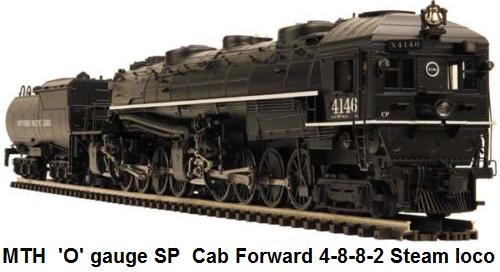 Although M.T.H. is often disliked by older Lionel collectors because its reproductions tended to lower the market value of
all but the most pristine vintage Lionel equipment, and disliked by some other hobbyists because of its
aggressive marketing and legal tactics, M.T.H. became widely credited with bringing innovations into a hobby
that had changed very little since the 1950's, as well as for lowering prices. By 2005 M.T.H. had pretty much
captured the market for contemporary Standard gauge tinplate trains and accessories. They reproduced all the
popular Lionel pre-war classics, including the #300 Hellgate Bridge and #804 Power Station. They also created the
modern era Lionel Standard gauge Commodore Vanderbilt and Hiawatha sets. M.T.H. also issued more contemporary versions
of Lionel pre-war era Standard gauge models by applying updated prototypical paint schemes to non-prototypical trains.
M.T.H. Standard gauge production enabled a whole new generation of toy train enthusiasts to have the ability to
experience, collect, operate and enjoy a much desired segment of the hobby, that they might otherwise would not of been
able to, due to the scarcity and costliness of the originals.
Although M.T.H. is often disliked by older Lionel collectors because its reproductions tended to lower the market value of
all but the most pristine vintage Lionel equipment, and disliked by some other hobbyists because of its
aggressive marketing and legal tactics, M.T.H. became widely credited with bringing innovations into a hobby
that had changed very little since the 1950's, as well as for lowering prices. By 2005 M.T.H. had pretty much
captured the market for contemporary Standard gauge tinplate trains and accessories. They reproduced all the
popular Lionel pre-war classics, including the #300 Hellgate Bridge and #804 Power Station. They also created the
modern era Lionel Standard gauge Commodore Vanderbilt and Hiawatha sets. M.T.H. also issued more contemporary versions
of Lionel pre-war era Standard gauge models by applying updated prototypical paint schemes to non-prototypical trains.
M.T.H. Standard gauge production enabled a whole new generation of toy train enthusiasts to have the ability to
experience, collect, operate and enjoy a much desired segment of the hobby, that they might otherwise would not of been
able to, due to the scarcity and costliness of the originals.
In 2001 M.T.H. added 1 gauge trains to its lineup under the name Railking One Gauge. These are
1:32 proportioned models, for 2-rail track. They are sometimes referred to as G gauge.
On December 30, 2005, the Union Pacific Railroad sued M.T.H. for using its logos,
along with the logos of various fallen flag railroads it has acquired, without a license. UP had previously sued other
manufacturers, most notably Lionel and Athearn, for their use of the logos. At the time of the
suit, UP had 104 licensees. The suit requested that M.T.H. stop using the trademarks, pay damages, and send UP-branded
inventory to the railroad to be destroyed. On November 8, 2006 M.T.H. Electric Trains and Union Pacific
 Railroad announced that they amicably settled the trademark infringement case that UP filed against
M.T.H in Omaha, Nebraska federal court. The settlement benefited both parties, as well as the entire model
railroad industry. It allowed Union Pacific to continue to protect its intellectual property, and authorized
M.T.H.’s use of Union Pacific’s trademarks and paint designs on model train products and accessories. Union
Pacific also decided to change its trademark-licensing program so that model railroad manufacturers would
no longer have to pay a royalty, and could enjoy a perpetual license to use Union Pacific trademarks and paint
designs on model railroad products. Products bearing American Refrigerator Transit Company, Chicago and North Western,
Denver & Rio Grande, Denver & Rio Grande Western, Rio Grande, Missouri-Kansas-Texas, MKT, M-K-T, Missouri Pacific Lines,
Missouri Pacific, Mo-Pac, Pacific Fruit Express Company, Pacific Fruit Express, Southern Pacific Lines, Southern Pacific,
Cotton Belt, Cotton Belt Route, Texas & Pacific, Union Pacific Railroad Company, Union Pacific or Western Pacific could be
made under trademark license from Union Pacific Railroad Company as part of this agreement.
Railroad announced that they amicably settled the trademark infringement case that UP filed against
M.T.H in Omaha, Nebraska federal court. The settlement benefited both parties, as well as the entire model
railroad industry. It allowed Union Pacific to continue to protect its intellectual property, and authorized
M.T.H.’s use of Union Pacific’s trademarks and paint designs on model train products and accessories. Union
Pacific also decided to change its trademark-licensing program so that model railroad manufacturers would
no longer have to pay a royalty, and could enjoy a perpetual license to use Union Pacific trademarks and paint
designs on model railroad products. Products bearing American Refrigerator Transit Company, Chicago and North Western,
Denver & Rio Grande, Denver & Rio Grande Western, Rio Grande, Missouri-Kansas-Texas, MKT, M-K-T, Missouri Pacific Lines,
Missouri Pacific, Mo-Pac, Pacific Fruit Express Company, Pacific Fruit Express, Southern Pacific Lines, Southern Pacific,
Cotton Belt, Cotton Belt Route, Texas & Pacific, Union Pacific Railroad Company, Union Pacific or Western Pacific could be
made under trademark license from Union Pacific Railroad Company as part of this agreement.
Lionel three-rail 'O' gauge track dates to 1915, and the technology that
necessitated the creation of 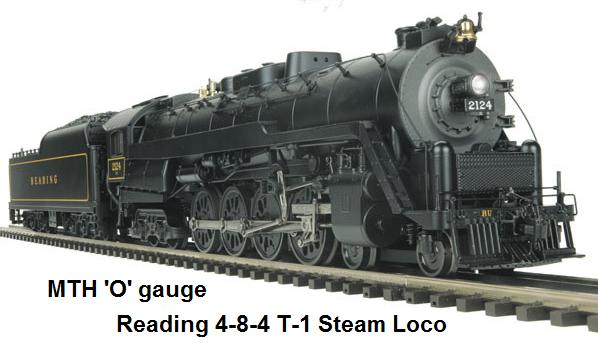 a center rail has long ago been surpassed. M.T.H. offered many of its high-end 'O' gauge locomotives in a
convertible 2-rail/3-rail configuration. To change a locomotive from one type of track to the other,
all that's involved is the removal or addition of center-rail pickup rollers and the flip of a slide switch
discreetly located on the locomotive.
a center rail has long ago been surpassed. M.T.H. offered many of its high-end 'O' gauge locomotives in a
convertible 2-rail/3-rail configuration. To change a locomotive from one type of track to the other,
all that's involved is the removal or addition of center-rail pickup rollers and the flip of a slide switch
discreetly located on the locomotive.
In 2009 M.T.H. again found itself filing another patent infringement lawsuit. This time around it was
against its longtime HO competitor Broadway Limited Imports. Mike Wolf alleged that Robert Grubba, president of Broadway
Limited Imports, stole the patented microprocessing technology that synchronizes puffing smoke with the chuffing sound of a
locomotive. M.T.H. claimed to have first developed the technology in 2000, according to the suit filed in US District Court
in Baltimore. Patents were issued to M.T.H in 2002 and 2003. Wolf discovered the infringement when he purchased one of the
locomotives in Florida-based BLI’s line. Grubba was previously chief engineer at Lionel Trains when MTH sued Lionel in
Federal court in 2000, won at trial and later settled. M.T.H. alleges in its most recent complaint that Grubba, while at
Lionel, "organized and participated in a scheme to steal over 3,000 of M.T.H.’s secret blueprints for designing more than 20
separate model trains." After Grubba left Lionel to become chief engineer for
K-Line Electric Trains Inc., Lionel sued in federal court in Manhattan in 2005, claiming Grubba had
conspired to steal Lionel’s trade secrets, one of which involved realistic sound effects for model trains. That case settled
on terms favorable to Lionel.
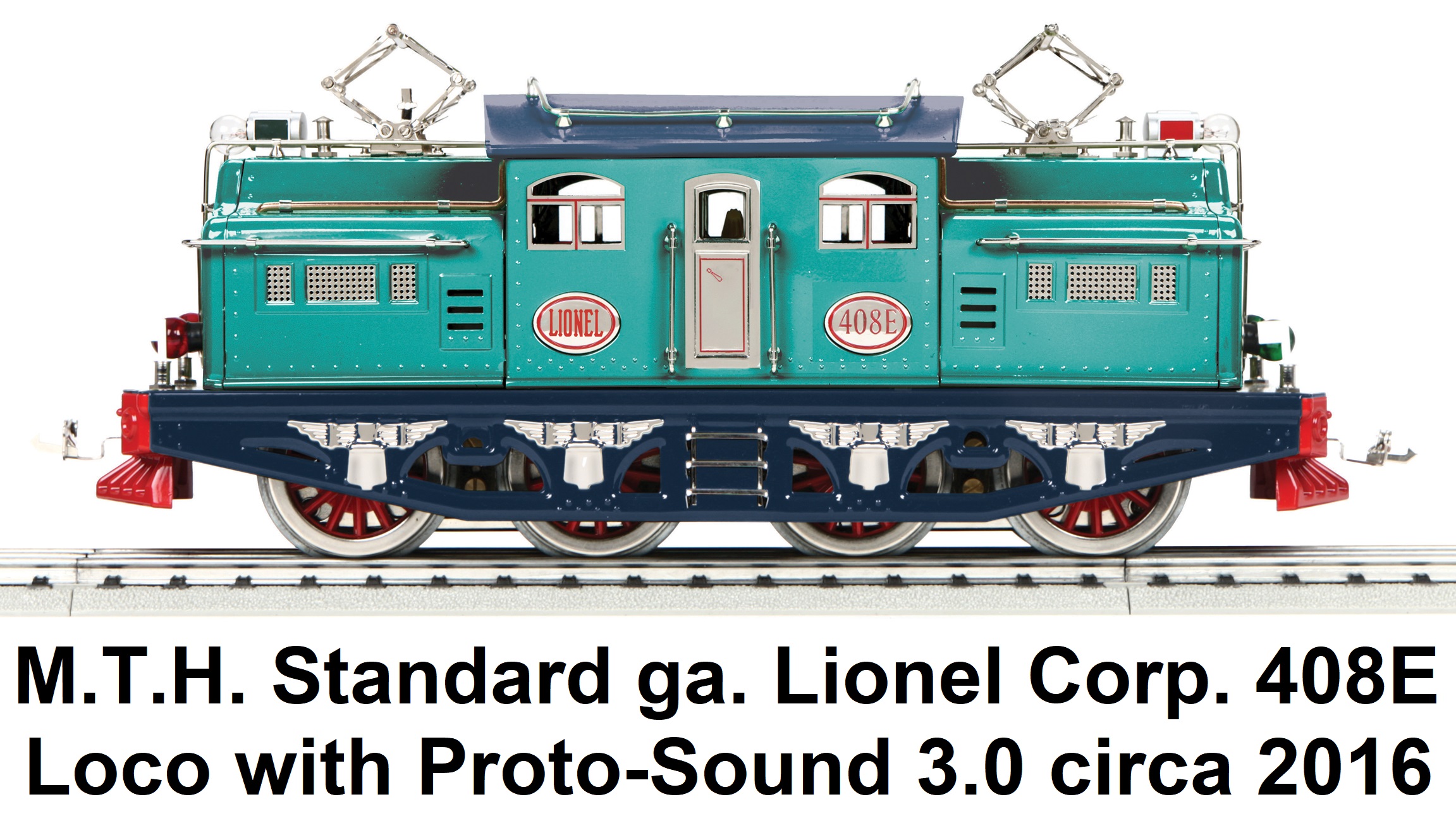 As strange as it might seem, in 2009, Lionel Electric Trains (Lionel, LLC) and M.T.H. Electric Trains began
working together under the Lionel Corporation banner. This time around the two joined forces, allowing M.T.H. Trains to
produce the Lionel tinplate electric trains with the official graphics. The interior electronics were from M.T.H. Electric
Trains, but the exterior was adorned with the Lionel Corporation graphics. The agreement was to last for a 10 year
period, and the decision was made by M.T.H. to not renew it when it expired in May 2019.
As strange as it might seem, in 2009, Lionel Electric Trains (Lionel, LLC) and M.T.H. Electric Trains began
working together under the Lionel Corporation banner. This time around the two joined forces, allowing M.T.H. Trains to
produce the Lionel tinplate electric trains with the official graphics. The interior electronics were from M.T.H. Electric
Trains, but the exterior was adorned with the Lionel Corporation graphics. The agreement was to last for a 10 year
period, and the decision was made by M.T.H. to not renew it when it expired in May 2019.
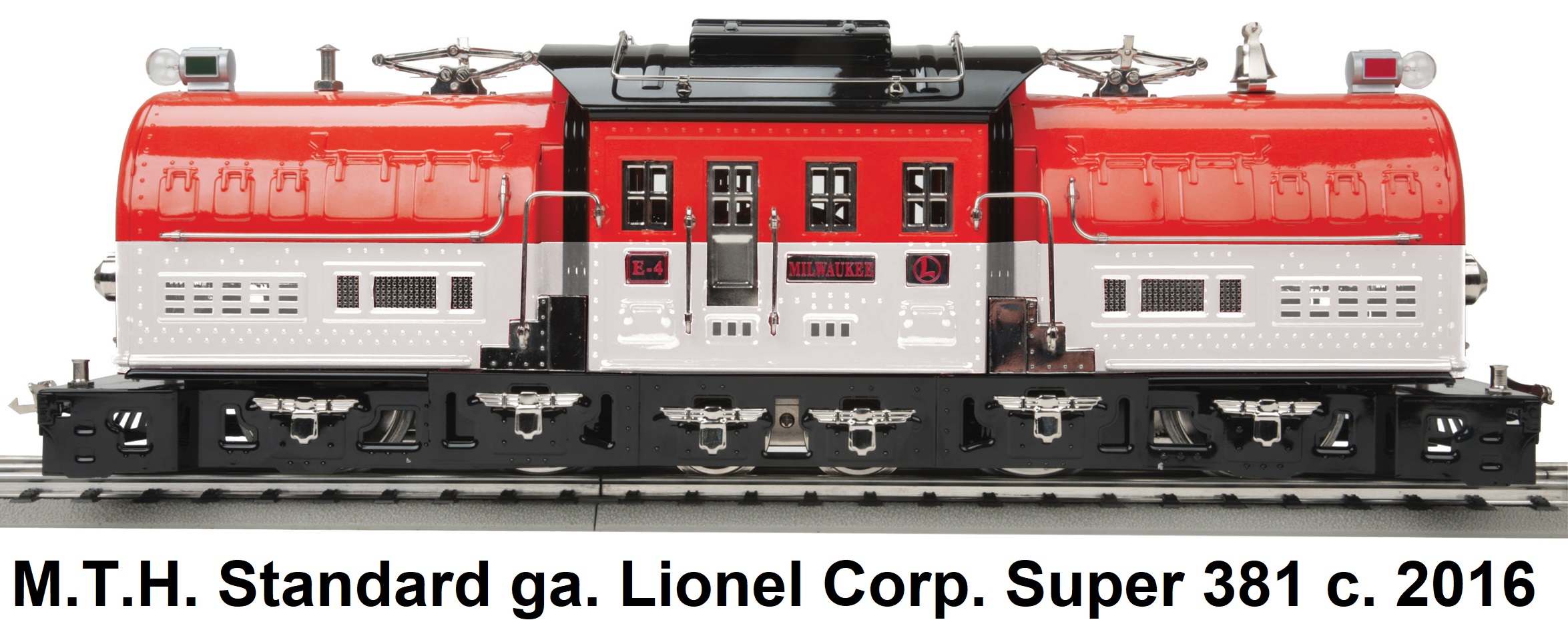
In 2012 M.T.H. Electric Trains purchased the tooling and production related assets
of The Showcase Line® and the S-Trax System® previously produced by S Helper Service, Inc. of Cliffwood, New Jersey.
The sale included designs, tooling, marketing and trademark assets related to all of S Helper’s S Scale, 1/64 model
railroading trains, track and accessories that had been developed over the last 20 years. In-stock inventory and the general
business assets of the company remained with S Helper Service.
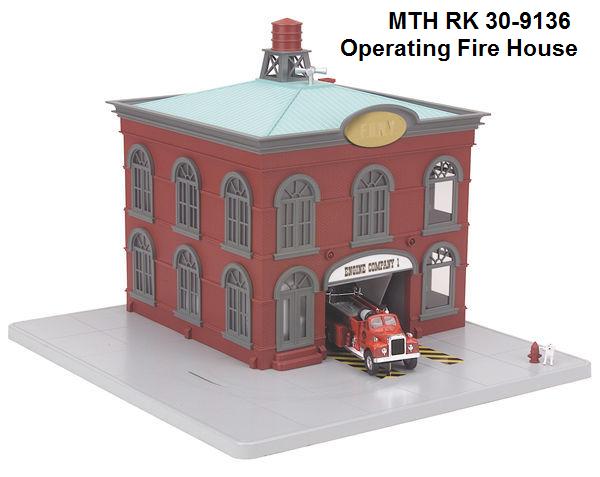 M.T.H. Electric Trains evolved into a seasoned American model train
manufacturer with a long history of innovation. Over a little more than a quarter century,
M.T.H. grew from a tiny business operated out of a spare bedroom in Mike Wolf’s boyhood
home, to an 80+ employee company headquartered in its own sprawling building in a suburb
of Washington, D.C. From its inception, M.T.H. cataloged over 10,000 different items
in four scales: 'O' gauge, One gauge, HO gauge, and tinplate Standard gauge. M.T.H. was co-owner
of two overseas facilities that made nothing but M.T.H. trains, and they utilized three other
factories that were dedicated solely to their product lines. At the peak of production M.T.H.'s 120,000-square-foot
building, was receiving and processing nearly 200 container loads of trains made in South Korea and China annually.
M.T.H. Electric Trains evolved into a seasoned American model train
manufacturer with a long history of innovation. Over a little more than a quarter century,
M.T.H. grew from a tiny business operated out of a spare bedroom in Mike Wolf’s boyhood
home, to an 80+ employee company headquartered in its own sprawling building in a suburb
of Washington, D.C. From its inception, M.T.H. cataloged over 10,000 different items
in four scales: 'O' gauge, One gauge, HO gauge, and tinplate Standard gauge. M.T.H. was co-owner
of two overseas facilities that made nothing but M.T.H. trains, and they utilized three other
factories that were dedicated solely to their product lines. At the peak of production M.T.H.'s 120,000-square-foot
building, was receiving and processing nearly 200 container loads of trains made in South Korea and China annually.

In June of 2020 Mike Wolf announced that he would be retiring after 40 years and closing down the business
on June 1, 2021, unless another entity was willing to acquire the company. All items advertised in the 2020 and 2021 catalogs
would be produced and delivered, and those item's 1 year warranty would be honored by the M.T.H. authorized service center
network through April of 2022. It was subsequently announced that Cabin Fever Auctions would be assigned the task of
liquidating items from the M.T.H. warehouse, including showroom displays, layouts, factory production and test samples,
original catalog artwork, photo samples and archival inventory, via a series of on-line auctions, commencing in December of
2020. In January of 2021 M.T.H. announced that it had sold off its HO and S Gauge tooling and molds to Scale Trains.com as
part of its divestiture of tooling assets. This included locomotive, rolling stock and track.
A year after Mike Wolf announced his retirement, a significant portion of the company was relocated from
its Columbia, MD. facility to a new one in Elkridge, MD. Other parts of the company continued to operate in Michigan. The Elkridge
location would be the place where the 'new' M.T.H. Electric Trains, managed by a few long-time employees, would continue to market
and produce new model train products. It would also provide warranty services and parts sales. A new website and parts ordering
platform were launched. The Research & Development group would continue to exist in western Michigan to further its DCS and other
electronic product creation. New products from M.T.H. were to include select RailKing and Premier 'O' gauge models and occasional
production of RailKing One Gauge G Scale models. The new Elkridge facility would be much smaller than the Columbia facility and would
not be utilized for warehousing merchandise. All new items would be made to order and specific custom runs would be done through
specific M.T.H. authorized Retailers. Approximately 20% of M.T.H.'s 'O' gauge tooling was acquired by Atlas
for manufacturing passenger cars. M.T.H. and Atlas have a shared tooling asset deal, with production branded according to the company
utilizing the tooling. Lionel Trains also purchased some of M.T.H.'s 'O' gauge tooling and announced that the first of the
specific models it had purchased would be revealed in their 2021 Signature 2 Catalog. Overall, the models included a range of products
produced by M.T.H. throughout its 41 years in the industry. This included RailKing accessories, RailKing buildings, some Premier Steam and
Diesel engine tools, a few of the Bantom RailKing Engine tools as well as the tooling for the Woodside variations of the 64' passenger cars.
Although founder Mike Wolf has retired, and the company downsized and sold off some tooling assets, M.T.H. is still in business,
and focuses on 'O' gauge and G scale production and parts/service support.
Link to M.T.H. Web Site.
